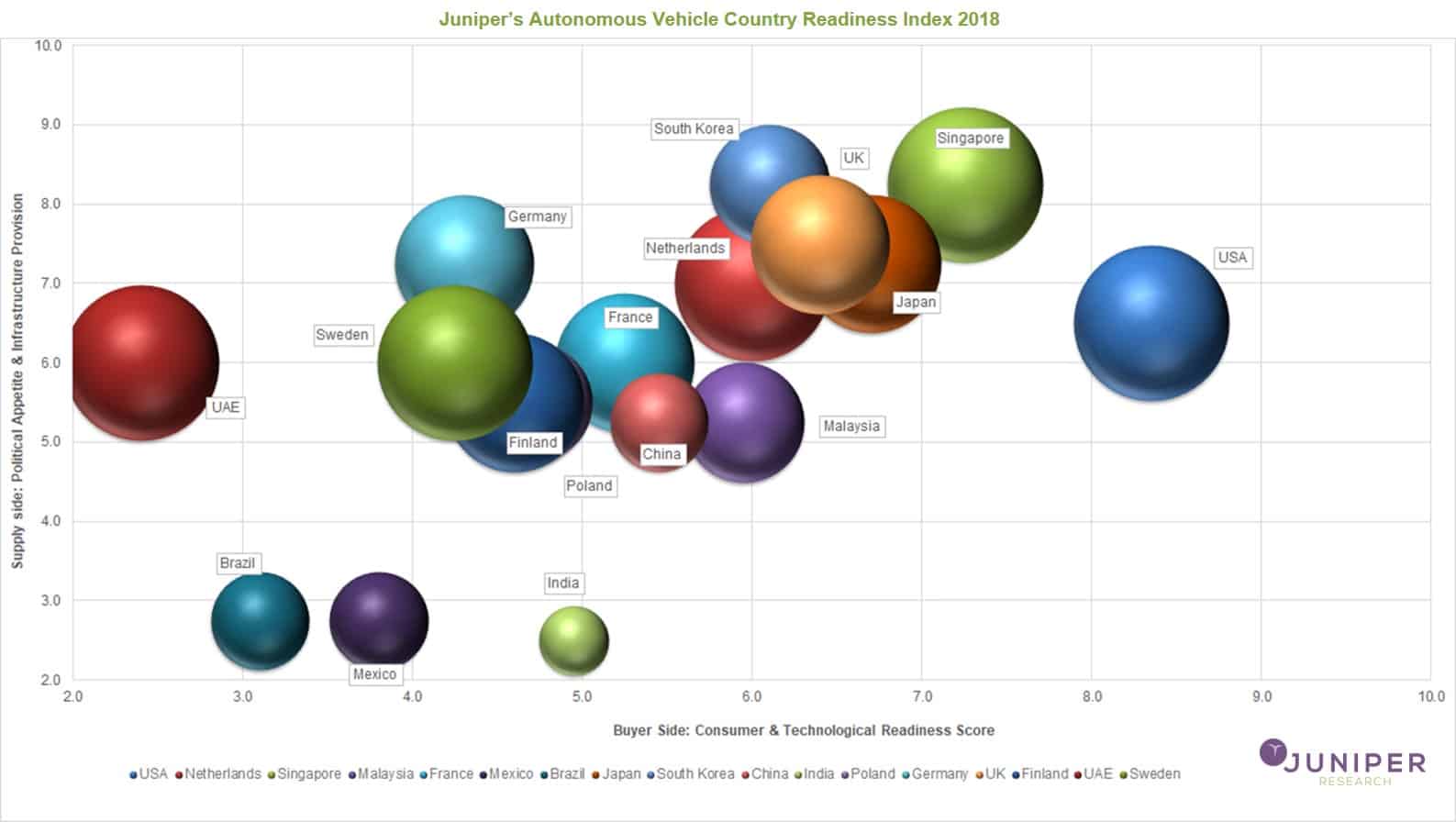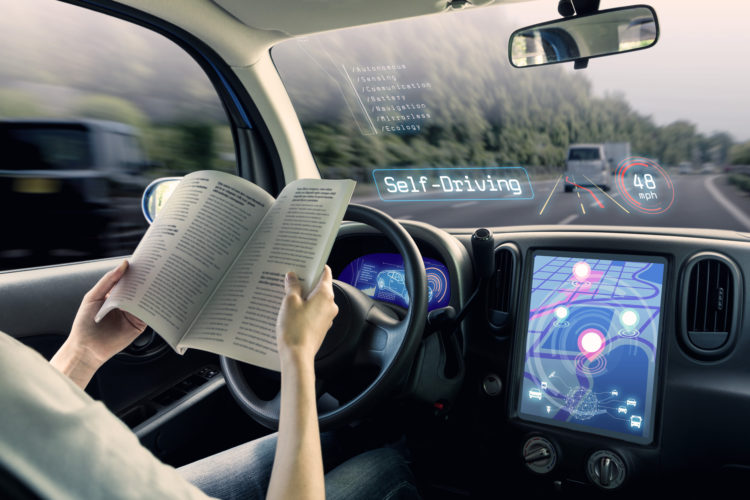Image by metamorworks (from iStockPhoto 692834394)
A new study from Juniper Research predicts that by end of 2026 over 50 million autonomous or self-driving vehicles will be hitting the road with 15% traversing the roads of Asia. It’s a small figure for sure compared to the forecasted 1.5 billion vehicles on the world’s roads in the same period.
The new research, Autonomous Vehicles & ADAS: Market Trends 2018-2026, found that a confluence of societal shifts, smart city mobility schemes and technology infrastructure will kickstart autonomous vehicle sales.
These include softening demand for vehicle ownership driven by the emergence of concepts such as Mobility-as-a-Service, driving safety benefits and establishment of underlying V2X (vehicle-to-anything) communications.
Singapore leads Juniper’s country readiness index
Juniper evaluated 20 countries according to their readiness for autonomous vehicles; analysing nations’ enthusiasm for autonomous vehicles and the likelihood of autonomous vehicles operating in the country. It considered regulatory policies, trials in operation, digital and city infrastructure in place and the participation of local technology firms and organisations.
Figure 1: Globaa autonomous vehicle readiness index

Source: Juniper Networks 2018
Research author Michael Larner added: “The US has all the key ingredients for autonomous vehicles to operate at scale. Federal and local authorities supporting AV trials, Silicon Valley and universities spawn firms that can deliver the technology, many local competitors are introducing driverless technologies plus the car remains vital for commuting and leisure travel.”
2019: the Milestone Year
The research found that OEMs will incrementally add driverless technologies to newer vehicle models. It predicted that 2019 will be a milestone year with the launch of vehicles where the driver’s full attention is no longer required. It claimed that the US and China will be the key regions to watch as new policies and guidelines for autonomous vehicles flourish; and combined, will account for nearly 65% of global autonomous vehicles sold in 2019.
Roadblocks ahead
Despite the optimism, obstacles continue to impede greater adoption of smart vehicles, including legal framework and liability, as well as reliability. Another challenge will be modelling driver behaviour using self-learning techniques to ensure the AV behaves properly in every possible traffic situation.





